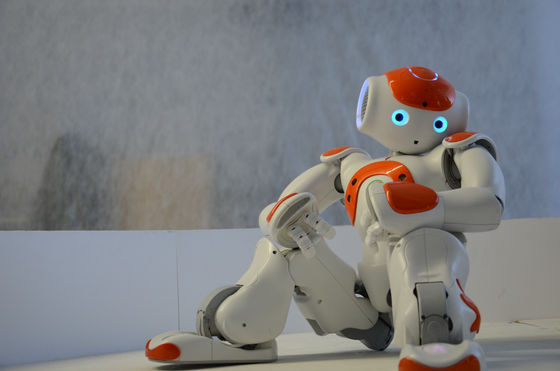The area of the brain that causes the 'Eternal Valley phenomenon' that becomes disgusting when the appearance gets closer to humans becomes clear

by
When creating something that is not human, such as paintings and robots, the higher the degree of reappearance, the better the humanity will be. However, when the come too similar to humans, discomfort and fear from a certain line there, are revealed by the survey made to feel that kind of Macabre is, this the ' uncanny valley ' It is called It was a big problem in robots that resemble human beings to go beyond this creepy valley, but the latest research has revealed new findings on ' Why creepy valley phenomenon occurs? ' .
Neural Mechanisms for Accepting and Rejecting Artificial Social Partners in the Uncanny Valley | Journal of Neuroscience
http://www.jneurosci.org/content/early/2019/07/01/JNEUROSCI.2965-18.2019

'Uncanny Valley': Brain network evaluates robot likeability
https://medicalxpress.com/news/2019-07-brain-network-robot-likeability.html
As technology improves, real humanoid robots and 3DCG models are being created. However, if the created humanoid can not cross the creepy valley, it will make people feel disgust and creepy. 'The resemblance to human form and behavior can be both strengths and weaknesses,' said Astrid Rosenthal-von der Putten, Aachen Institute of Technology, and the resemblance to human resemblance is a creepy valley It is pointed out that you will have the risk of
It is the robot engineer Dr. Masahiro Mori who proposed the creepy valley phenomenon. This phenomenon, which was proposed in 1970, has been translated from the 'Eternal Valley' in Japanese to 'Uncanny Valley'.

by
The latest research paper on such a creepy valley phenomenon has been published in the journal Journal of Neuroscience . The study, conducted by British and German neuroscientists and psychologists, has identified mechanisms that occur in the brain when creepy valley phenomena occur, and people's reactions to realistic human-like robots and CG Has the potential to be the first step in improving
'For neuroscientists,' Eternal Valley Phenomenon 'is an interesting phenomenon. This is the first sensory input (such as visual information) given, for example, to feel something like a robot's picture as a human or a non-human It implies the existence of a neural mechanism that determines whether you feel or not, and this information is also considered to be used in other evaluation systems to determine your preferences, 'says Cambridge University's physiology, development, Dr. Fabian Gravenhorst, a lecturer in the neuroscience department.

by
In order to investigate the neural mechanisms that work when the creepy valley phenomenon is born, the research team is examining the brain patterns of 21 subjects by performing two different tests using fMRI .
In the first test, the subjects were shown a large number of photographs of humans and robots, and they were asked to evaluate their preference for them and how much they felt like human beings. In the second test, subjects were asked to judge, 'Who can accept the choice of a gift for myself?' By measuring the subject's brain activity between the two tests, researchers have identified which areas of the brain produce a feeling like the creepy valley phenomenon.
Studies have shown that some brain regions close to the visual cortex that process visual information produce brain signals related to humanity.

by Markus Spiske
In addition, another part of the brain called the prefrontal cortex has been observed to lead to eerie valleys. In the previous researches, the prefrontal cortex is considered to be an area with a system for judging all kinds of stimuli, and is an area showing the reward value of social stimuli such as “comfortable feeling”. It has come.
Studies have shown that two different parts of the medial prefrontal cortex play an important role in the eerie valley phenomenon. One of the two places is supposed to convert brain signals related to 'humanity' into 'detected human (determined as human)' signals, and the other part (prefrontal cortex ventral) ' It is said that the signal about 'humanness' is integrated with the positivity evaluation. With these two functions, when looking at something similar to human beings, it distinguishes whether they saw human beings or non-humans, which directly leads to preference evaluation as well.
The ventral prefrontal cortex seems to have been active in choosing subjects that are 'acceptable even if they choose a gift for their own' from pictures of the robot etc. On the other hand, when rejecting a gift from an artificially made 'human-like thing' such as a robot, it seems that the amygdala responsible for emotional reaction has become particularly active. It was said that there were individual differences in the reaction of acceptance or rejection to the robot.
The results of these studies can have a major impact on the design of a more human-like robot. 'We know that the evaluation signals generated in these brain regions can change with social experience,' said Dr. Grabenhorst.
'This is the first study to show that the strength of the effects of the creepy valley phenomenon has individual differences. That is, some people may be hypersensitive, others may be less sensitive.' It means that there is no single robot design that everyone likes or fears. '
Related Posts:
in Science, Posted by logu_ii







